
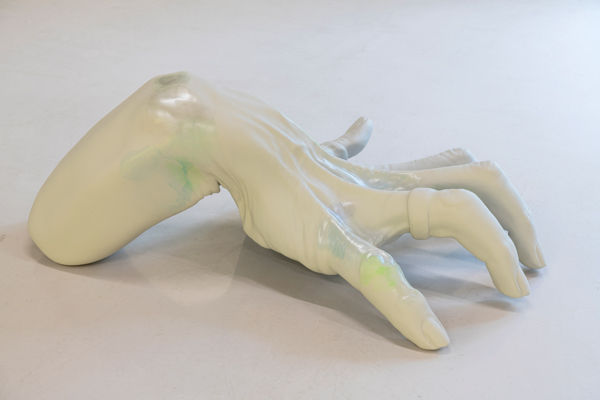
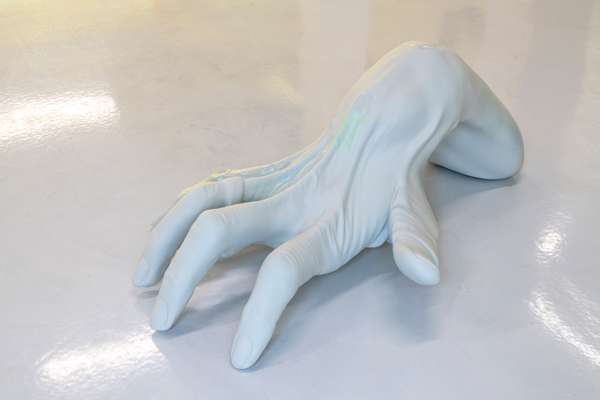
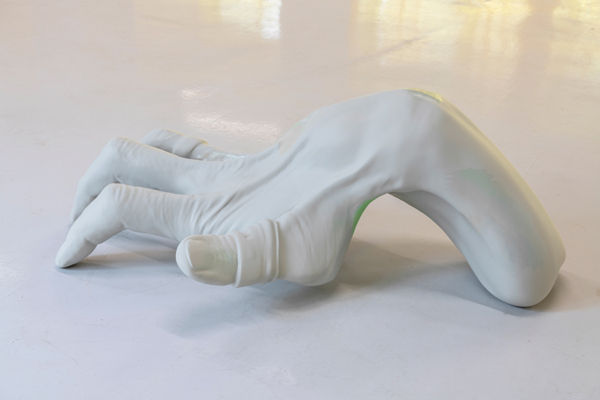
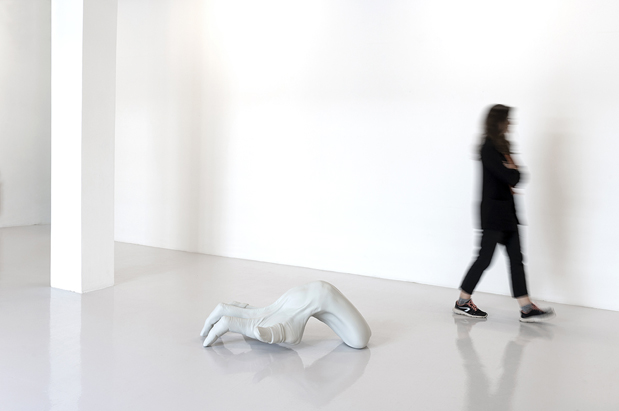
Bighand (1D) - 2022/2024
Résine PU 350g, peinture vernis Soft touch, peinture acrylique. Pièce unique. /
50g PU resin, Soft touch varnish paint, acrylic paint. Unique piece.
H: 52cm L:123 cm l: 70cm
Production Ingrid Luche / Fondation Des Artistes
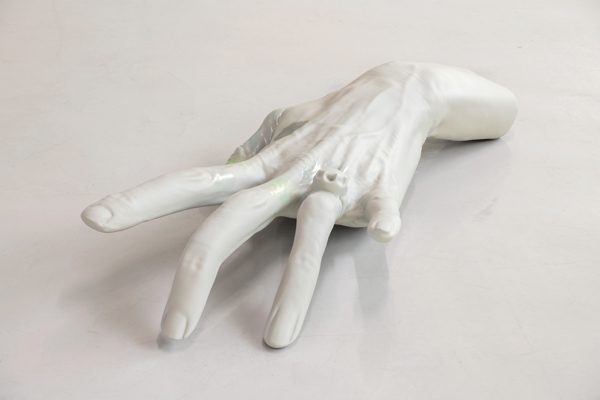
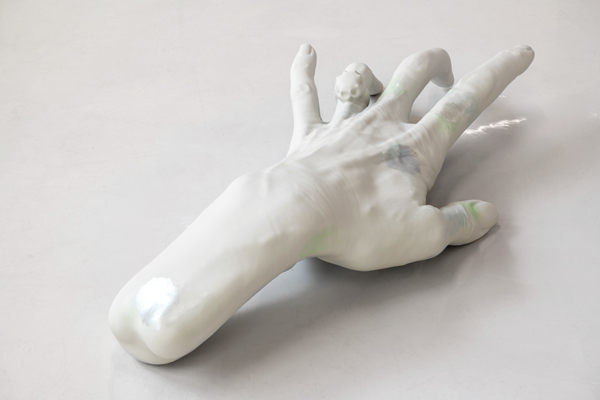
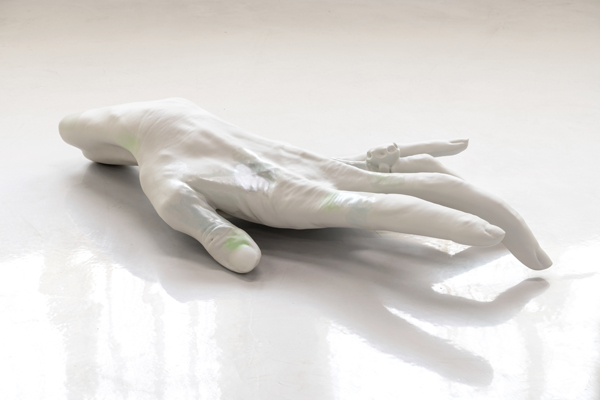
Bighand (1G) - 2022/2024
Résine PU 350g, peinture vernis Soft touch, peinture acrylique. Pièce unique. /
50g PU resin, Soft touch varnish paint, acrylic paint. Unique piece.
H: 25cm L: 132cm l: 63cm
Production Ingrid Luche / Fondation Des Artistes
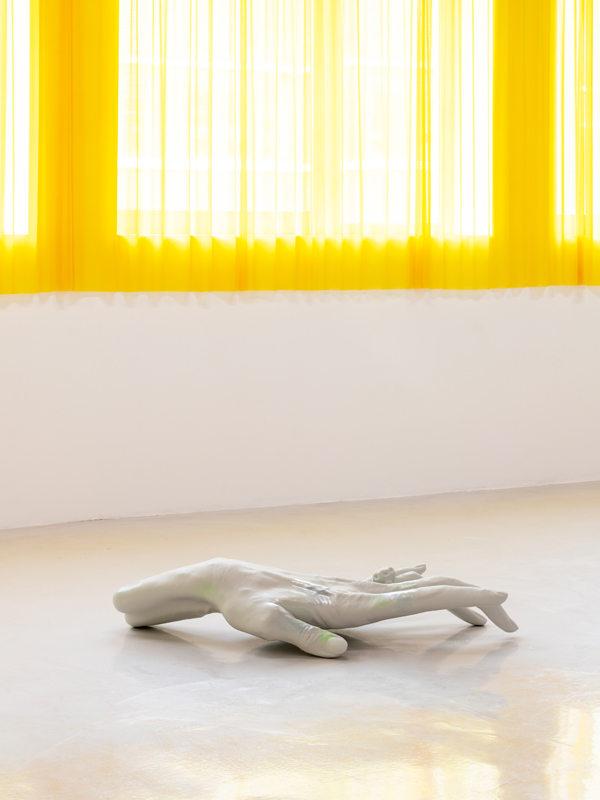
Vues de l'exposition Dévoré, 2024 - Galerie Air de Paris /
Views of the Dévoré exhibition, 2024 - Air de Paris gallery
Bighands sont des sculptures de grandes mains déformées posées au sol.
Longues d’environ 150 cm et larges de 90 cm, leur texture est proche d’une peau grise sous laquelle on lit les plis, les reliefs des veines, des ongles et de l’épiderme. Les mains incluent des bagues intégrées sous la peau. Chaque main est arrêtée au niveau du poignet (moignon), créature autonome empruntant la forme d’un membre humain, main droite ou gauche ne forment pas un ensemble, mais deux membres indépendants évoquant le syndrome de la main étrangère.1
Bighand qui emprunte son nom à la créature Bigfoot2, rappelle une création fantastique ou de science-fiction ou une expérience chirurgicale (de greffe3) inversée.
Elle s’appuie sur le médium de l’agrandissement sculptural caractéristique de la technologie numérique : une maille 3D n’a pas de dimension et peut prendre toutes les tailles, comme une parabole de l’exploration humaine à ses limites où la main contient ses ornements comme des implants.
1 Le syndrome de la main étrangère, en anglais : Alien Hand Syndrome (AHS), est une affection neurologique rare, parfois également appelée « syndrome de la main anarchique », « syndrome du Docteur Strangelove » (traduit et adapté en français : « syndrome du docteur Folamour ») ou « syndrome de la main capricieuse », provoque chez les personnes qui en sont atteintes des mouvements incontrôlables de la main qui semble dirigée par une volonté externe.
2 Le Bigfoot ou Sasquatch est une créature légendaire qui vivrait au Canada et aux États-Unis. La multiplication des témoignages laisse penser qu’il ne s’agit pas d’un individu, mais de plusieurs créatures.
3 La première greffe de la main réussie en 1998 donne lieu à de nouvelles expériences, sauvant des individus d’une amputation ou d’un handicap, multipliant la possibilité pour un corps d’accepter la partie d’un autre.
Bighands are sculptures of large deformed hands placed on the ground.
Approximately 150 cm long and 90 cm wide, their texture is close to a grey skin under which one can read the folds, the reliefs of veins, nails and epidermis. The hands include rings integrated under the skin. Each hand is stopped at the wrist (stump), an autonomous creature borrowing the shape of a human limb, right or left hand do not form a whole but two independent limbs evoking the syndrome of the foreign hand.1
Bighand, which borrows its name from the Bigfoot creature2, is reminiscent of a fantasy or science fiction creation or an inverted surgical (grafting3) experiment.
It relies on the medium of sculptural enlargement characteristic of digital technology: a 3D mesh has no dimensions and can take on any size as a parable of human exploration at its limits where the hand contains its ornaments as implants.
1 Alien Hand Syndrome (AHS) is a rare neurological condition, sometimes also called "Anarchic Hand Syndrome", "Doctor Strangelove Syndrome" or "Capricious Hand Syndrome", which causes uncontrollable movements of the hand that seem to be directed by an external will in sufferers.
2 Bigfoot or Sasquatch is a legendary creature that is believed to live in Canada and the United States. The multiplication of testimonies suggests that it is not an individual, but several creatures.
3 The first successful hand transplant in 1998 gave rise to new experiments, saving individuals from amputation or disability and increasing the possibility of one body accepting the part of another.